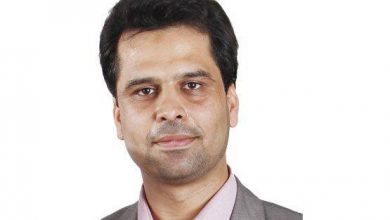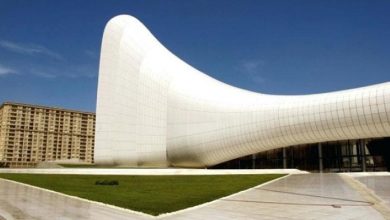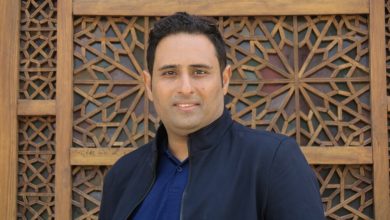Sultan of Oman (King) Haitham bin Tariq Al Said, during the past few days, traveled to Tehran with a high-ranking delegation of officials from this country and met with senior officials of the Islamic Republic of Iran. Meetings In addition to discussing relations between the two countries and stressing their improvement, the Sultan of Oman made efforts to mediate between Iran, the United States and some Arab countries, including Egypt.
Journalists Plus: “Switzerland” is a European country where “neutrality” is one of the basic principles of this country’s foreign policy; This country does not interfere in armed conflicts between other countries to ensure external security and promote peace. This is a policy established by Switzerland itself; Despite its war neutrality, Switzerland pursues an active foreign policy and is often involved in peacebuilding processes around the world; A role similar to that played by “Oman” in the recent decades in the West Asia (Middle East) region.
Where is Amman?
Oman is a country located in the southwestern region of Asia bordering Saudi Arabia to the west, the United Arab Emirates to the northwest, Yemen to the southwest, the Sea of Oman and Iran to the north, and the Indian Ocean to the east and southeast. . limited. Islam is the official religion of this country and the Shiites constitute the third religious sect in this country. This country has a strategic value because of its location in the strategic corridor of Hormuz, and because of its location in the Persian Gulf region, it benefits from the energy resources in this region, including oil. On the other hand, this country is located on the waterways for transporting energy and goods transferred between Asia and Europe, and has a communication role, and in this sense it is of interest to the strategic goals of the great powers, including the United States. American states. Most of the population of Oman is Arab, and minorities of Baloch, Iranians, Africans and others also live in this country.

The geographical location of the Sultanate of Oman
The nature of the Omani government is an absolute monarchy, and all matters are summed up in the person of the Sultan. The three authorities in this country are not separate from each other and the Sultan has control over all the three authorities and determines their duties. The Sultanate of Oman is hereditary, and the royal family chooses the successor of the Sultan three days after his death or abdication. Of course, the current king of Oman (Haitham bin Tariq Al Said) was chosen from among his cousins, because the previous king of this country (Sultan Qaboos) had no son. In addition to the position of king, the sultan is also the head of government, the position of prime minister and commander-in-chief of the armed forces. Ministers are appointed by the Sultan and members of the Council of State are chosen by the Shah; The Speaker of the Consultative Council, the heads of the judiciary and the judges of the courts are also appointed by the Shah.
History of relations between Oman and Iran
According to what was mentioned in historical documents, the political, military and commercial relations between Iran and Oman, which are several hundred years old, reached a complete decline at the end of the Qajar rule in Iran, and the “weakness of centralization.” the governments of Iran” and “the inability to rule over the Persian Gulf region and the Sultanate of Oman,” and “the overall influence and domination of British colonialism over the lands of Oman” and its complete isolation from international issues” as well as “the reluctance and unwillingness of Iranian statesmen to expand relations with the government of Oman, from The most important reasons for the continuation of this situation in the relations between the two countries.The state of lack of direct communication between Iran and Oman faced changes in 1349, and Sultan Qaboos bin Said, the former and late king of Oman, who overthrew his father during a coup in this year and took his place in the government, took steps to establish relations .between the two again.
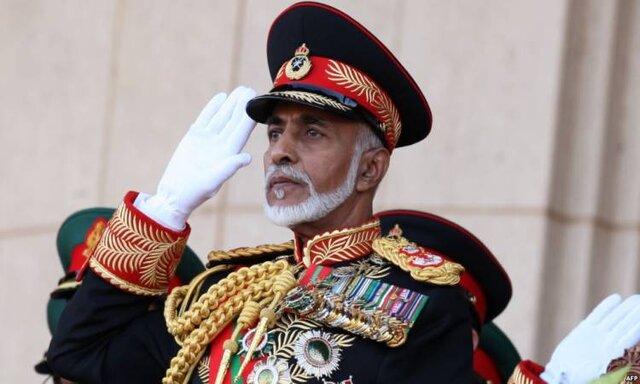
Sultan Qaboos, former King of Oman
Sultan Qaboos sent a telegram to the Shah of Iran in the month of Shahrur 49, referring to the political, economic and social developments in Oman, seeking Iran’s approval and support. As a result of this message, Iran’s ambassador to Kuwait was dispatched to Oman to deliver Iran’s message to Qaboos. This mission was carried out on the 13th on the 49th with the delivery of Iran’s message in the city of Salalah; This action was the first trip by a high-ranking Iranian politician to Oman after many years of stalemate in relations, and after a century and a half, it opened a new chapter in relations between the two parties. During this trip, the Iranian government’s willingness to establish political relations with Oman was announced to the authorities in that country. In January of the same year, a press delegation of representatives of Iranian newspapers went to Oman, and in August 1950, Iran congratulated the first anniversary of Sultan Qaboos’ sitting with a message, and finally on Shahrfar 4 1950, the Iranian government issued an official declaration establishing political relations between the two countries and an imminent exchange of ambassadors. After the Iranian military involvement in the Dhofar War – the civil war in Oman, during which the rebels supported by the Soviet Union and China fought in the Dhofar Governorate in the east of this country with the Omani royal government – relations between the two countries became very strong, and Sultan Qaboos in the same direction in 1952, he traveled to Iran, in addition to his meeting with the Shah, held talks with Prince Abbas Hodeidah – Prime Minister – and Abbas Ali Khalatbari – Minister of Foreign Affairs – and visited military and economic centers. , such as Army Officer University and Iran National Factory; This trip marked the beginning of the strengthening of relations and the resumption of economic and trade relations between the two countries.
After the victory of the Islamic Revolution in Iran, by order of Sultan Qaboos, a delegation headed by Yusuf bin Alawi, the deputy foreign minister of Oman at that time, visited Imam Khomeini (may God be pleased with him) and declared their support for the revolution. From the Iranian people, the Al-Masirah air base in Amman to carry out “Operation Tapas” and imposed war, relations between the two countries were reduced to normal. However, during the eight-year war between Iran and Iraq, Oman, unlike many governments in the region, declared neutrality and eventually supported UN Security Council resolutions to end the war.
After the end of the war, relations between the two countries gradually expanded, with the trips of then-President Muhammad Khatami in 1982, Mahmoud Ahmadinejad in 1986, Hassan Rouhani in 1992 and 1995, Ibrahim Raisi in June 1401, and the trips of the Sultan of Oman (Sultan Qaboos) in the years 88, 92 and 1402 (Haitham bin Tariq Al-Saeed) and met the leader of the revolution. Meetings that show the closeness and common interests of the two countries towards each other and the specific strategic relations between them.
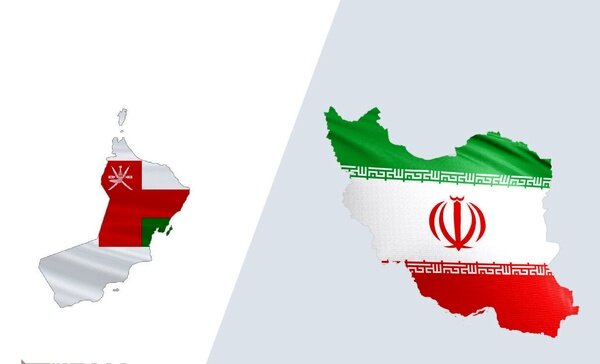
Iran and Oman have centuries-old ties
Sultanate of Oman; Medium for all seasons
Oman has always played the role of the “silent mediator” in the various events and challenges that have arisen between Iran and Western countries. During the 8 years of sacred defense, unlike many of its neighbors in the Persian Gulf, Oman managed to maintain diplomatic relations with both sides, in addition to supporting UN Security Council resolutions to end the war, and seeking mediation between Iraq and Iran. After the sacred defense period, Oman negotiated between Iran and Saudi Arabia to establish diplomatic relations between these two countries as well as Iran and England.
Oman has long supported Iran’s right to peaceful nuclear technology. The official position of the Omani government on Iran’s nuclear program was as follows: “The sultan hopes that Washington will engage in direct dialogue with Tehran to resolve the Iranian nuclear program crisis. The sultanate has no reason not to believe Iran’s assertions that Iran’s nuclear program is for purely civilian purposes. This region is undoubtedly not want to witness a military confrontation or any tension”; Also, in the early 1990s, Oman laid the groundwork for the nuclear deal by mediating between the United States government and the Islamic Republic of Iran and holding the first round of secret negotiations between Iran and the United States regarding Iran’s nuclear activities. Oman was one of the Arab Gulf countries that expressed its satisfaction with the implementation of this agreement from the beginning and considered this agreement a factor in easing tension in the region. On July 27, 1996, Donald Trump, then President of the United States, called Sultan Qaboos and asked him for help in dealing with Iran’s “destabilizing activities” in the Middle East. The two also discussed ways to resolve regional disputes. Given the type of communication of the Muscat authorities with the Yemeni Ansar Allah movement, as well as other parties involved in the Yemeni crisis, Oman cooperated with Iran in Yemeni affairs. Hosting 3 rounds of negotiations between Iran and Saudi Arabia to resume diplomatic relations and hosting a round of negotiations between the political and military delegations of Iran and Ukraine regarding Ukraine’s claim that Russia used Iranian drones in the war in Ukraine, as well as efforts to strengthen it. Relations between Iran and Bahrain, including other measures taken by Oman in the past years.
During the past two decades, the Omani government continued its mediation efforts regarding the release and exchange of prisoners between Iran and some Western countries. Muscat’s mediation in the story of the release of British sailors from Iran in 1986, the release of 3 Americans accused of espionage from Evin prison in 1989 and 1990, the release of two Iranian-British citizens, Nazanin Zaghari and Anoush Ashouri, and the return. About half a billion dollars demanded by Iran from Britain, which occurred in March 1400, and the release of Muhammad Baqir Namazi on October 13, 1401, as well as the consultation and attempt to exchange the Belgian relief worker Olivier Vande-Castell and the Iranian diplomat Asadullah. Asadi, who is imprisoned in Belgium on false charges, in recent days, Oman’s actions in this field have included them. After the closure of the Iranian and British embassies in Tehran and London following the attack by some demonstrators on the British embassy in Tehran in 1990, the Omani government pledged to protect Iran’s interests in Britain.
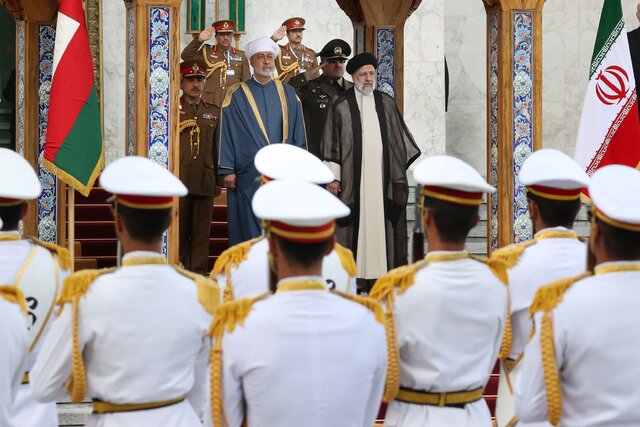
The official reception of the King of Oman in Tehran – June 7, 1402 AD
Mediation between “Tehran – Cairo” and follow-up to the “Joint Comprehensive Plan of Action”. New role playing in oman
During the past two days, during his visit to Tehran, the King of Oman, Haitham bin Tariq, continued his efforts to play the role of “mediator” between the countries of the Middle East and continued his moves in the direction of. “mediation” and “correspondence”, letters found and hidden to the authorities that Iran brought with them; The message of this trip was to express Egypt’s desire to resume relations with Iran, but some believe that the Sultan of Oman was most likely carrying another message from the United States on this trip about the negotiations to lift sanctions and the Joint Comprehensive Plan of Action; On this trip, the message of the Egyptians was conveyed correctly and received a clear response because the Supreme Leader of the Revolution, in a meeting with the King of Oman, in response to an expression of the desire of the Egyptian authorities, said, “We welcome this situation and we have no problem in this regard.” The hidden message of US officials can also be answered when we see openings in the JCPOA negotiation process; Opening the door for the exchange of prisoners of dual nationality between Tehran and Washington.
the end of the letter

